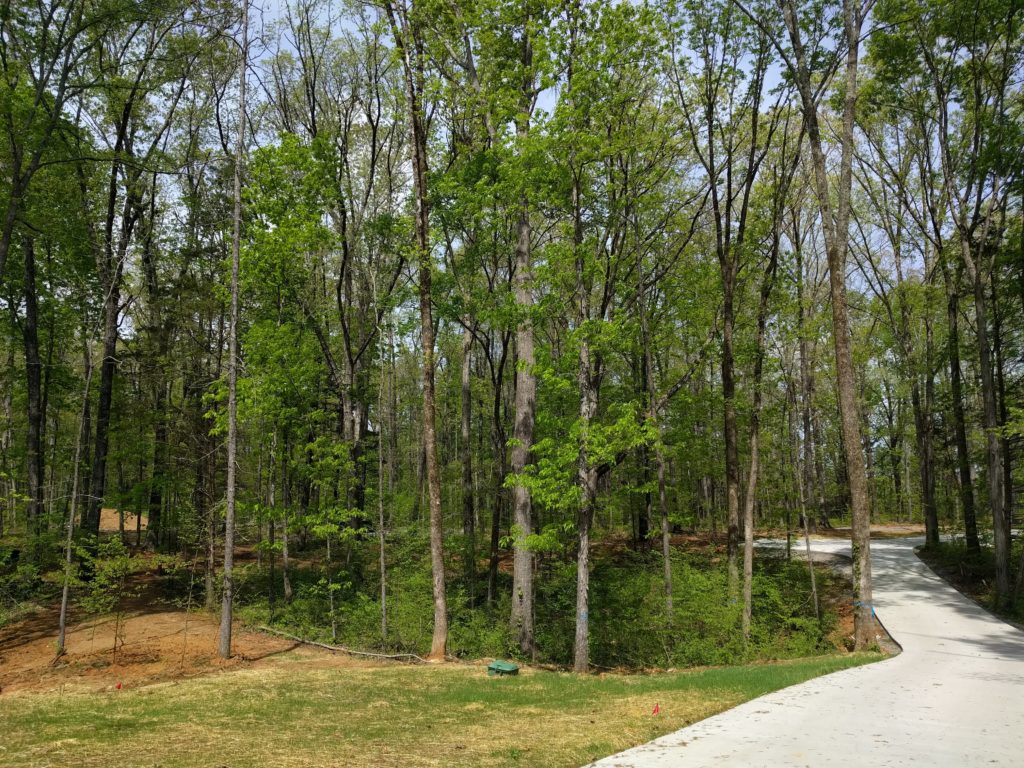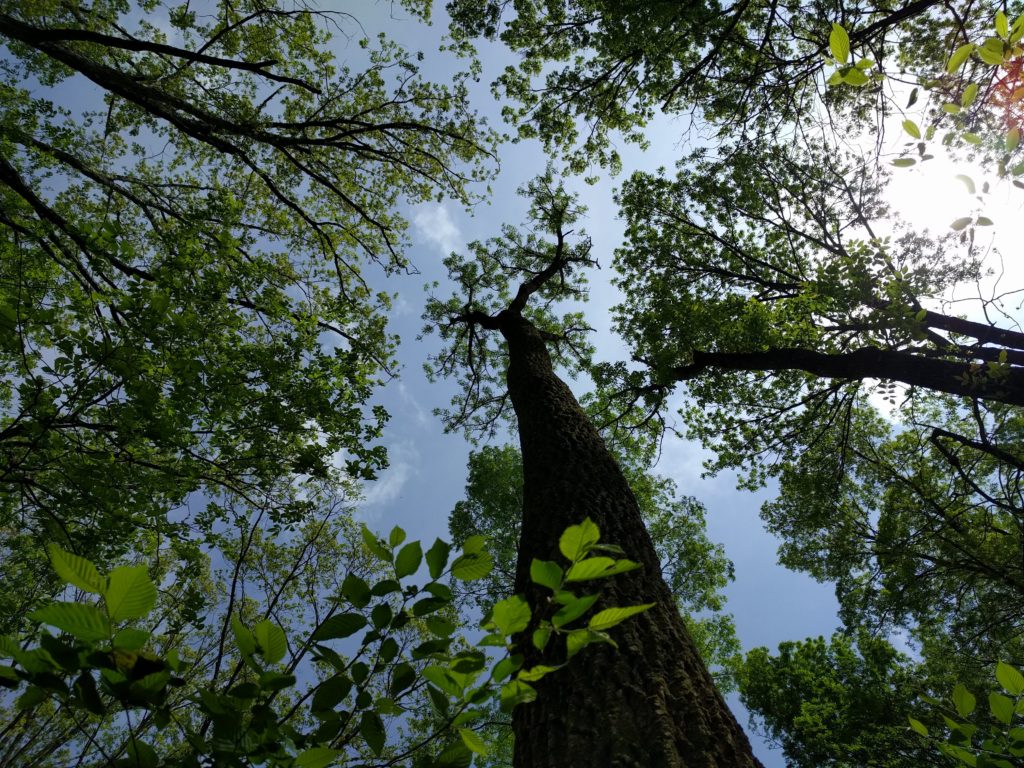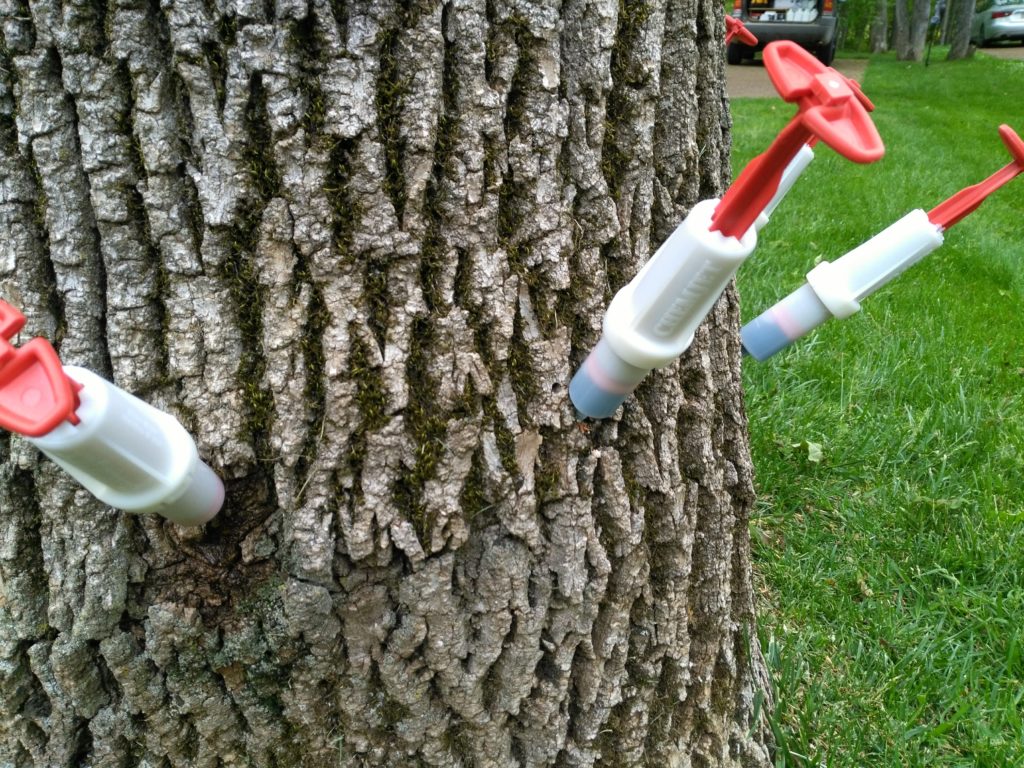
EAB, or Emerald Ash Borer is a green beetle of Asian origin, approximately one centimeter in width, which has been causing devastation to the Ash Tree since it’s first introduction to North American soil. Discovered in Detroit in 2002, it is thought that Emerald Ash Borer was transported by boat from Europe in solid wood packing material on cargo ships and was likely in North America for 10 years prior to this discovery.
As a non-native species, the Emerald Ash Borer population is not subject to natural predators, and it has spread across the northeast. With the additional help of unsuspecting humans (mostly from firewood transport), it has travelled throughout over two-thirds of North America with confirmed sightings in 35 states, causing devastation to the native Ash trees wherever it is present. The death toll for Ash is climbing, and EAB is responsible for killing more than 50 million Ash trees since it’s discovery. When EAB populations are especially high the beetle also causes damage to fringetrees, a related genus.


In the spring, mature beetles emerge from tell-tale D-shaped holes in the bark of Ash trees. They travel to nearby ash or are transported by human means within infested firewood or other wood products and lay their eggs in the crevasses of the Ash tree’s bark. Larvae feed on phloem and outer sapwood, creating tunnels, or galleries, that eventually cause death to the tree. Woodpeckers enjoy eating the larvae of the EAB, so signs of heavy woodpecker activity on the bark is another indication that EAB might be present.
With camping season upon us, we really want to emphasize that you should not transport firewood from one area to another. Warren County and the surrounding counties are included in federal firewood quarantine boundaries. It is highly recommended that you purchase (or gather) and burn firewood locally to minimize the spread of EAB, and it is illegal to leave the federal quarantine boundary with EAB related material without a federal permit. To keep our forests safe from this threat do not transport unused ricks to another area. You can leave unused firewood with your park ranger, or simply stack it neatly for the next camper to utilize on site.

You can protect undamaged Ash with two treatment methods depending on the area where your trees are located. If you are not near a water source, a soil-drench method of applying pesticide directly to the ground around the tree is one option. An alternative is to inject chemical directly into the tree. The most proven method, per researchers at Michigan State and Ohio State, has been injection with Emamectin benzoate since it kills all life stages of the beetle. Whereas soil drenches with chemicals such as imidacloprid only affect 2 of the 4 life stages of the insect, so protection has varying degrees of success against the beetle. These methods are most effective for 3-5 years and should be regularly reapplied on a schedule to protect the health of your trees.
Panther Creek Forestry’s team of Foresters, Field Biologists and Forestry Technicians are licensed and bonded, and can work within your budget to help you assess and determine the best course of treatment for this forest pest. To find out more about EAB you can visit the TN Department of Agriculture’s website or go to dontmovefirewood.org, and emeraldashborer.info.
comments +